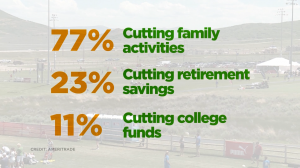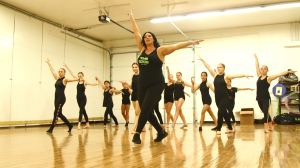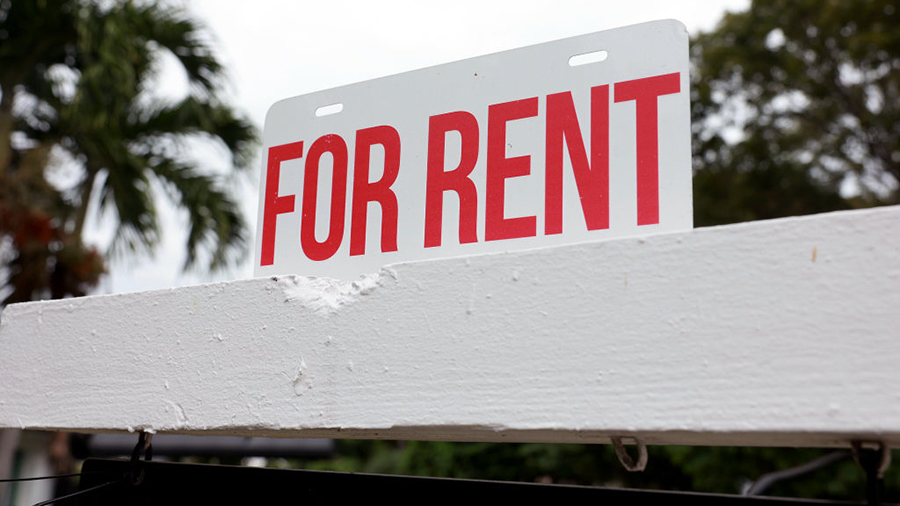The Cost to Compete: Solutions for Families Priced Out By Youth Sports
Jul 13, 2018, 3:33 PM | Updated: May 21, 2023, 4:03 pm
PARK CITY, Utah — At the recent Avalanche Invitational soccer tournament in Park City, the U-16 girls had two goals: score and stand out for college scouts.
“When you spend this much time and money, you want to win,” said mom Kathy Evans.
To get to this level isn’t cheap: families pay league fees, coaching fees, team fees, tournament fees, private conditioning fees, the list goes on.
At least this tournament didn’t include out-of-state travel, but those extra costs aren’t unusual.
DECLINING PARTICIPATION
Those expenses may be why participation in youth sports has declined eight percent in the last decade. Data from the Sports & Fitness Industry Association and the Aspen Institute also shows kids in low-income families are playing sports at about half the rates as those in higher income families, depending on the sport.
“[Youth sports] is a machine. To be part of the machine, you have to buy in early and often,” said Travis Dorsch, Assistant Professor at Utah State University.
Dorsch played in the NFL and now researches parent involvement in youth sports at USU.
He says his experience in sports as a kid was completely different than that of kids today.
“It was all about the kids and the games were just that, games,” he said.
Now he finds parents who “buy in” as an investment in their kids’ futures, and he says that’s a risky investment at best.
“That’s the million dollar question and it’s not very good,” he said.
SPENDING ON YOUTH SPORTS
Dorsch lead a research team that surveyed families across the country on spending for sports. He found the average family spends $2,292 a year. Many spend 10 percent of their income.
On a more extreme end, an Ameritrade survey found 20 percent of families spend $1,000 per child, per month – about the same as the average monthly mortgage.
Those kinds of costs are leading many families to drop out altogether, and the decline in participation has led some sports organizations to call it a crisis.
“It’s kind of sad because finances are a barrier to participation to some kids, and that’s one thing U.S. Soccer is trying to fix,” said soccer coach Lee Davis.
He says U.S. Soccer tries to keep costs low, offers scholarships and offers different options for levels of competitive play.
Parents who try to afford the costs take a variety of measures, some even detrimental, according to Ameritrade.
Here is where the risky investment comes in: some families will spend $10,000 a year hoping it will pay off in a college scholarship, but most scholarships are worth much less.
At the University of Utah for example, the average scholarship for men is $18,444. For women, it’s $16,908.
And the chances of even getting an athletic scholarship offer a harsh reality check.
The same Ameritrade study found 45 percent of parents are “pretty sure” their children will get a scholarship. The NCAA shows closer to two percent of kids will actually get a scholarship to play in college.
And Dorsch says only two percent of those students will go on to play professionally.
“It is really easy to lose perspective,” said Davis. “I see that from parents.”
This cost to compete isn’t limited to sports. Dance, cheer and other activities are known to be just as expensive.
The pre-professional dance team at The Edge in Lehi has monthly expenses that include tuition, uniforms, competitions, even specific false eyelashes and nail polish color.
Studio director Andrea Olsen takes pride that her studio is cost conscious.
“I couldn’t afford to dance at the big places because my mom couldn’t afford it, so when I set my prices, I always think about that,” she said.
Her studio, like many others, offers scholarships and for some parents, a chance to work off part of the costs.
As “Team Mom,” Julie Carlile attends all the dance competitions and creates small confidence-booster treats for all the dancers. She says that helps offset about one-third of tuition costs.
Her strategy is one of several Utah parents could explore to help control the cost of youth activities, while still providing their children with an enriching experience.
Work/Volunteer:
Volunteer to coach, administer for programs, help at a studio or whatever opportunities may exist to defray the costs. Don’t be afraid to ask.
Explore Recreational/Non-traveling Teams:
Parents we talked to started their children in county rec leagues or non-traveling teams until their children were more serious and sure about committing to the sport.
Gear Exchanges:
Find used gear that another player has outgrown through your own organization. Offer to host a gear-swap, whether actual event, or even an on-line exchange within the league.
Communicate:
Researchers and coaches say this is most important. Communicate with your child to make sure you’re spending what you can afford for their goals, without sacrificing your own financial future.
If your family is feeling the financial strain of trying to make ends meet, you can watch our full series of Unaffordable Utah stories here.
















